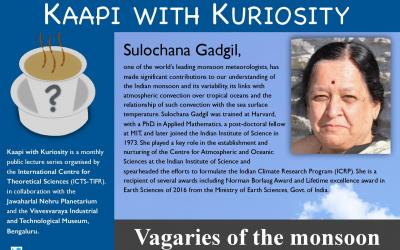The monsoon visits us, without fail, year after year, but not always with the same gusto. So, every summer, the question uppermost in the minds of not only meteorologists and farmers but economists as well, is how will the monsoon behave this year? Over centuries, the monsoon has captured the imagination of the finest minds and great advances in our understanding the meteorology of the tropics and the monsoon have been made particularly in the last few decades. Yet, while scientists can predict eclipses with great accuracy so many years ahead, the problem of forecasting whether the monsoon will be normal as in 2016 or a drought as in 2015 still remains a challenge.
What makes the problem of prediction of the monsoon difficult, is that whereas the planetary orbits are stable, the rain-giving clouds arise from an instability of the tropical atmosphere and multi-scale interaction is critical for the very existence of the system that gives us the monsoon rains. Vagaries of the monsoon arise from feedbacks between different components of the land-atmosphere-ocean system. Thus, understanding and predicting monsoon variability is perhaps the most challenging problem in atmospheric science today. In this lecture, I shall introduce this fascinating phenomenon, share the present understanding of the monsoon and some facets of its variability, and briefly touch on the impacts on our agriculture and economy.


